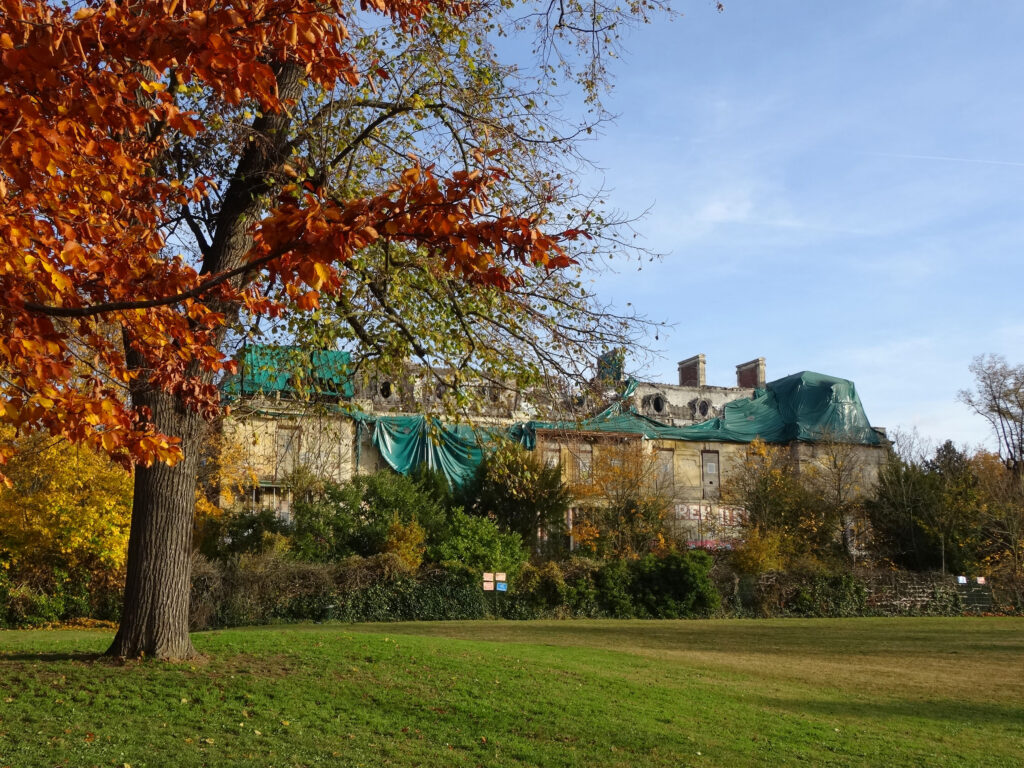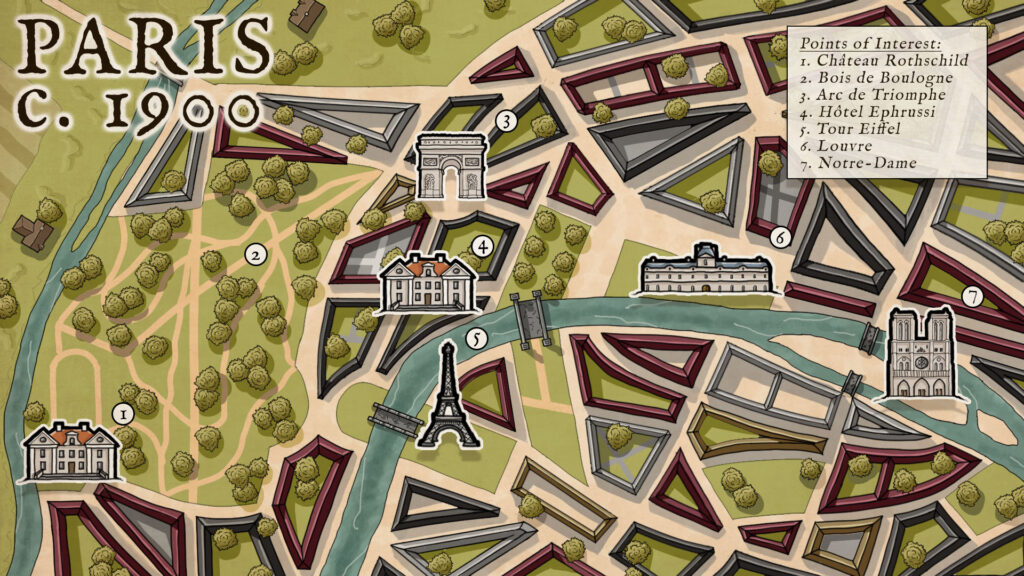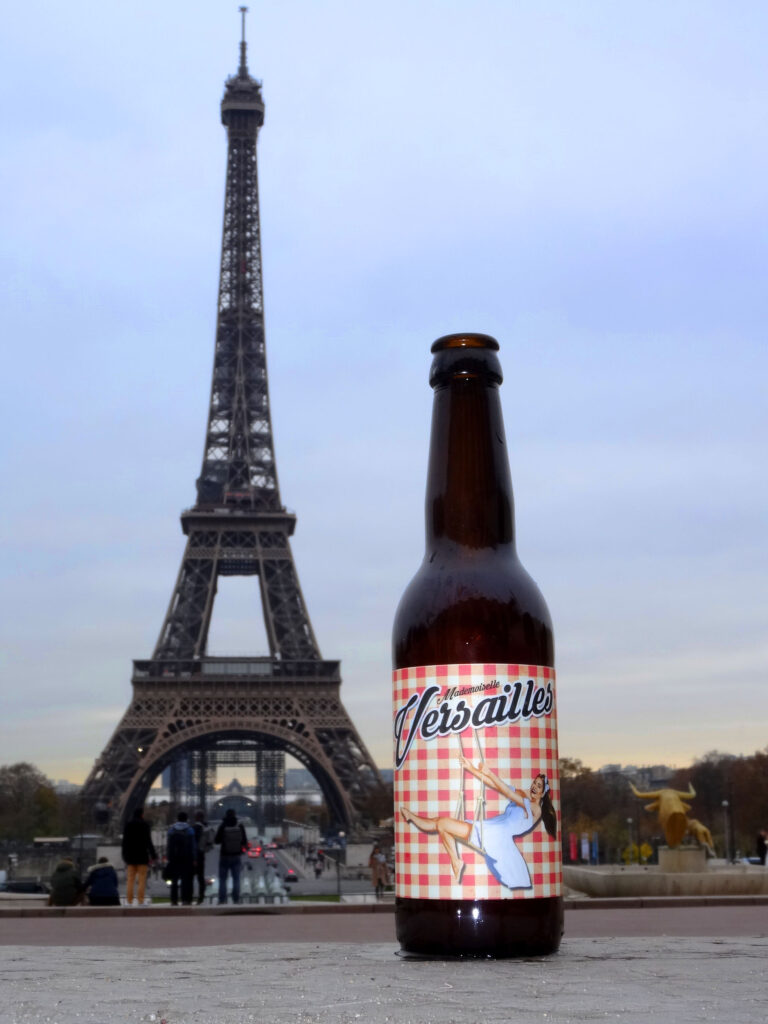
Visiting Paris can be an overwhelming experience. You may be struck with the so-called Stendhal Syndrome: the state where you are so overcome by the beauty and opulence of a place that you simply collapse under the weight of the impressions. More likely, you will experience the more aptly named Paris Syndrome, where you discover that the glorious Paris from movies and TV-shows is nothing like the real Paris, which is overflowing with garbage, dog poop and, well, Parisians.
In either case, you might want to take a break from it all, and this is where the Bois de Boulogne can offer a welcome reprieve. About a half-hour walk from the Champs-Elysées or the Eiffel Tower, this park is a haven of tranquillity in the otherwise bustling, stressful metropolis. Philip IV gave the park its name in the fourteenth century after visiting Boulogne-sur-Mer on the northern coast of France, where miracles were supposed to have happened. Under the ancien regime, the park was a hunting grounds for kings, but since the Revolution it has been open to the public.
It is quite remarkable to have a place of such bucolic tranquillity near the centre of a major capital. You can sit on one of the park benches and see groups of old age pensioners run by in exercise groups (in France, of course, OAPs are relatively young.) If you are lucky, you might spot a flock of brilliantly green parakeets perched on the branches of the trees. How did these equatorial birds end up here? No one knows; presumably a few must have escaped from human captivity at some point, and settled in the nearest thing they could find to a tropical forest. In any case, they seem to thrive now, and brighten up the visit for any parkgoer passing their way.
To the south-west of this park lies another, smaller park; fenced off, but still open to the public. The Parc de Rothschild was the personal property of the Rothschilds, a Jewish family who were the wealthiest bankers in Paris, and the world. In the centre of the park stands a grand mansion, known as the Château Rothschild. Built in 1855 for banker James Mayer de Rothschild, it is now completely dilapidated.
If you travel north from here, in the direction of the Arc de Triomphe, you may come across the home of another Jewish banking family: the Hôtel Ephrussi. Located at the Place des Etats-Unis, this hôtel particulier is now – perhaps somewhat ironically – the residence of the Egyptian Ambassador to France. This family is today notable mostly for having been the subject of a recent, remarkably popular book.

In 2010, Dutch ceramic artist Edmund de Waal published a book titled The Hare with the Amber Eyes. His uncle had just left him a collection of so-called netsuke, and Edmund decided to explore the history of his inheritance. The netsuke are small Japanese figurines in various materials, intricately carved and often magnificently expressive. The piece from de Waal’s title had been part of the art collection of his distant relative, Charles Ephrussi. The story of how these netsuke made their way across centuries and continents was central to the book about the rise and fall of his family’s fortunes: how, starting out as grain-traders in Odesa, they went on to establish great finance houses in Paris and Vienna. The book became a bestseller; it won numerous awards and was translated to 29 languages.
The Rothschilds have their recent chronicler too. But where de Waal’s book was captivating, Neill Fergusson’s two-volume, 1200-page work on the Rothschilds is laborious, to say the least. Such a detailed account focusing on the financial affairs of one family may not be for the general reader, but it helped secure Fergusson’s reputation as a pre-eminent economic historian. The Rothschild family originated in the city of Frankfurt. When French revolutionary forces dismantled the Jewish ghetto, the family was able to expand its business beyond the city limits. Like the Ephrussi, they also established branches internationally, becoming, as per Ferguson’s title, The World’s Banker.
Both houses, and both families, saw their heyday during what is known as France’s belle epoque. This term describes the years between two wars: from the nation’s recovery after its defeat in the Franco-Prussian war of 1870-71, until the coming of the horrors of World War I in 1914. During this period, the country’s industrialisation gained steam, its colonial possessions expanded enormously, and France became the cultural centre of the world, within music, art and literature. For exploited industrial workers and colonial subjects, life may have been less glamorous, but for well-off Parisians, this was a period of unbounded optimism and national pride.
The Ephrussi and Rothschilds were right in the middle of this economic and cultural revival. Charles Ephrussi, the owner of the netsuke, and an avid art collector, served as the model for Charles Swann in Marcel Proust’s In Search of Lost Time. James de Rothschild, the head of the French branch of that family, was also portrayed by novelists, including Zola and Balzac. In 1862, he hosted Napoleon III at his magnificent château in Ferrières east of Paris, where the emperor could admire works by van Dyck, Velazquez and Rubens.[1]
It is impossible, however, to talk about Jews in belle epoque France without mentioning the Dreyfus Affair. In 1894, the military officer Alfred Dreyfus was convicted of espionage on fabricated evidence, and sentenced to hard labour on Devil’s Island, off the coast of South America. Dreyfus was released in 1899, but not fully exonerated until 1906. The affair became a cause célèbre in France, and to the so-called “Dreyfusards”, there was little doubt that Dreyfus had been targeted because he was Jewish (most famously expressed in Emile Zola’s impassioned newspaper article J’Accuse…!) The underlying antisemitism in French society had now come resoundingly to the surface.
To wealthy Jewish families, the Dreyfus Affair and the ensuing upsurge in antisemitism presented a dilemma. Though naturally inclined to side with the Dreyfusards, most decided to keep a low profile. In part this was an entirely pragmatic decision: if public opinion turned too sharply against them, this could threaten their economic interests. At the same time, there were also those who equivocated for more purely ideological reasons. Jews in France had hitched their wagon to the state as their protector, and many, at least initially, convinced themselves that Dreyfus had received a fair trial. France, as one observer put it, was a fatherland, “not a tent for the night”.[2] Even Alfred Dreyfus himself served loyally in World War I. Hope remained that, in spite of everything, there was still a home in France for the Jewish people.
It would not be long before that hope was thoroughly quashed. In 1940, Hitler invaded France. The country was divided between one Nazi-occupied half, and one half governed by the cowardly Pétain, who eagerly did Hitler’s bidding. The Ephrussi and Rothschilds were better placed with funds and connections than many others, and most managed to escape persecution, internment and death, but their possessions on the Continent were confiscated.
After the war, efforts to retrieve what had been taken was a long and mostly futile affair. The Rothschilds were fortunate in having established a substantial branch in England. From this they were able to rebuild their financial operations, though in a much reduced form. The Ephrussi had no such luck. Since their possessions were mostly in Nazi-occupied France and Austria, there was little left to recover once the war was over. Out of Charles Ephrussi’s substantial art collection, all that remained were those small netsuke figures, smuggled out by a loyal housemaid in the pocket of her apron. Among these was the hare with amber eyes of de Waal’s title.[3]
With the wealth and influence of these Jewish banking houses so greatly diminished, one might think that the hatred and envy directed towards them would similarly decrease. But this presumes some form of rationality behind these sentiments. After the war, the emission point shifted to the United States. In 1970, a former FBI agent by the name of W. Cleon Skousen published the book The Naked Capitalist, where he imagines the Rothschilds at the centre of a shadowy power structure including also Rockerfeller and J.P. Morgan. Though generally dismissed by historians, the book was widely influential at even the highest levels of the Republican party. Skousen, it should be said, was at pains to emphasise that he was not invoking any kind of “Jewish conspiracy”.[4]
Others had fewer such qualms. Behold a Pale Horse, a 1991 book by Navy veteran William Cooper, implicates both Eisenhower, the Illuminati, and aliens, alongside the Rothschild family, in a plot to usher in the New World Order. Though the political establishment generally shies away from Cooper, it is a foundational text for the American conspiracy movement, having sold over 300,000 copies.[5] Paradoxically, as the Rothschilds’ significance on the world stage dwindled, that significance grew in the public consciousness with inverse proportionality.
Antisemitism is a remarkably consistent trait in human society. In Europe, it goes back at least as far as the High Middle Ages, when Jewish caricatures began to turn up in art, rulers expelled Jews in the name of religious conformity, and the persecution events later known as pogroms became commonplace.[6] Where can we find the roots behind this development?
Explanations are manifold, some completely contingent on time and place. Many have chosen to blame Christianity, and this is not entirely unfounded. The New Testament, and especially Matthew 27:25 (“His blood be on us, and on our children”), opened up the path for accusations of deicide. But this charge was always weak, on a theological as much as an historical basis. Christian doctrine is that Christ died for the sins of all mankind, and it is therefore misguided to single out specific individuals or groups for blame. Accordingly, the Church has often stood as protectors of the Jews in times of persecution. Furthermore, antisemitism can be found also in non-Christian societies, and the worst atrocities in Europe took place in the secular age. It is therefore worth looking for a more universal framework to help us understand the phenomenon.
The Jews in Europe always belonged to what economist Thomas Sowell calls a “middleman minority”. A middleman is someone who stands between producer and consumer in the economy, such as merchants, traders or bankers. Middlemen are absolutely essential to any advanced society, just as credit is essential to a capitalist economy. But to the mob, especially in times of crisis, these people appeared to skim wealth from society without giving anything useful in return. They would be labelled as rent-seekers or, in more inflammatory language, parasites. This has been the case with minorities as diverse as the Chinese in Southeast Asia, the Armenians in the Ottoman Empire, and the Igbos in Nigeria.[7]
Jews in medieval Europe were in a special position in that, on the one hand, they were not allowed to own land, but on the other, they were exempt from the Christian ban on usury: lending money to private persons against interest. This led them away from the agriculture performed by 90% of the Christian population, and into commercial pursuits that could be highly profitable. It also led to widespread resentment and occasional persecution and violence.
The word hate is often bandied about as a catch-all to describe whatever the speaker may take issue with in the opinions of his opponent. Ultimately it is a no more than a basic emotion, and not even necessarily a bad one; it can be a force for good if that which you hate is evil. The fact that it is such a vague, amorphous term is perhaps its appeal to those who want to bend it to their purpose. Maybe it would be better to avoid the word altogether in public discourse, but if it is to have any value whatsoever, it needs at least to be clearly delineated. A preference for the known over the unknown is a basic human instinct; tribalism has been a survival instinct in our evolutionary history. This has led us to divide the world into ingroups and outgroups, friends and enemies.
But as a corrective to these primitive instincts, we have reason. This means thinking for oneself rather than following the crowd; it means letting rationality, rather than emotions govern important decisions; and it means being guided by the best available evidence before making a judgement, rather than cherry-picking the evidence that fits a preconceived conclusion.
In a small park in Paris, the Château Rothschild stands in near-ruins, but perhaps not for long. A property developer has bought the building, with plans to restore it after decades of neglect. Once more it will be a playground for the wealthy, in this new belle epoque. It is not the first time such plans have been announced; it remains to be seen if they come to fruition this time around. What also remains to be seen is whether the heritage of the château’s original owners will be preserved, or if their legacy will go the way of their fortune: into perdition.
Mademoiselle Versailles

Nothing embodies belle epoque Paris better than the Eiffel Tower. It was built for the 1889 Exposition Universelle, or world’s fair, to mark the centenary of the Revolution. A monument to French engineering ingenuity, it was only meant to stand for 20 years, but has made it so far and seems unlikely to be dismantled today. Not everyone loved it initially, though; the writer Guy de Maupassant called it an “ungainly skeleton”. In spite of this, he would dine at the tower every day. When asked why, he replied that “It’s the only place in Paris where I don’t have to see it.”[1]
Unlike most capitals in Europe, Paris does not have any famous breweries associated with it. This is because most of the country’s beers are produced along the borders of countries with stronger beer-brewing traditions, such as Germany and Belgium. There are, however, some interesting craft beers from the area, if one is interested in that sort of thing. The Brasserie Distrikt produces a tasty blonde named after another nearby landmark. Their Mademoiselle Versailles is creamy, slightly bitter, and fruity.
[1] Roland Barthes, ‘The Eiffel Tower’, AA Files, no. 64 (2012): 124.
[1] Niall Ferguson, The House of Rothschild (New York: Penguin, 1999), 108, 262.
[2] Béatrice Philippe, Les juifs à Paris à la Belle Époque (Paris: Michel, 1992), 175.
[3] Edmund De Waal, The Hare with Amber Eyes: A Hidden Inheritance (London: Vintage, 2011), 277–78.
[4] W.C. Skousen, The Naked Capitalist (Verity Publishing, n.d.), 6.
[5] Mike Rothschild, Jewish Space Lasers: The Rothschilds and 100 Years of Conspiracy Theories (Brooklyn: Melville House, 2023), 149–62.
[6] Sara Lipton, Dark Mirror: The Medieval Origins of Anti-Jewish Iconography (New York: Metropolitan Books/Henry Holt and Company, 2014).
[7] Thomas Sowell, Black Rednecks and White Liberals (New York: Encounter Books, 2006), 65–72.